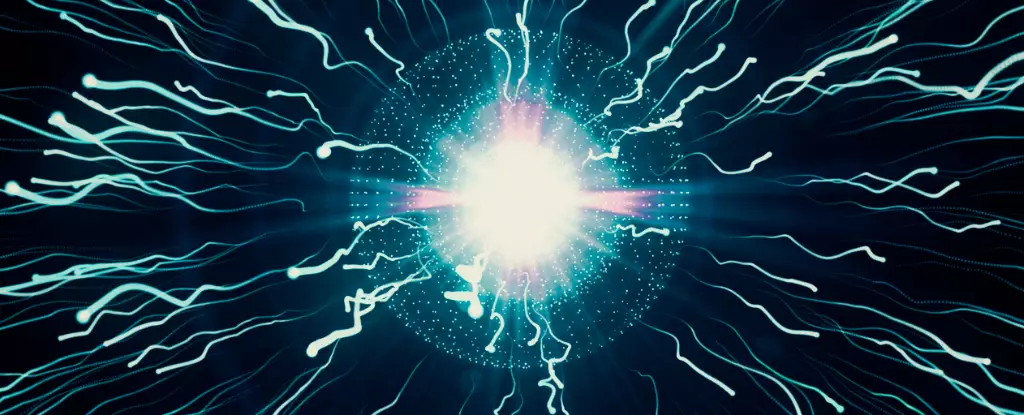The quest to understand the fundamental building blocks of our universe has taken significant strides thanks to an ambitious experiment that has been ongoing for over a decade. This groundbreaking work has yielded the initial findings on the intricate world of particles revolving within neutrons, revealing new avenues for unraveling the mysteries of matter. Conducted at the Thomas Jefferson National Accelerator Facility (TJNAF), this endeavor utilized the Central Neutron Detector and heralds a new era in nuclear physics research.
At the heart of every atom lies the nucleus, composed of protons and neutrons, which in turn are made up of even smaller constituents known as quarks. These quarks interact through force-carrying particles called gluons, creating a complex and dynamic environment. While the arrangement of quarks within protons and neutrons may seem orderly, their behavior is characterized by inherent chaos; particles exist in a constant interplay of presence and non-existence dictated by the principles of quantum mechanics.
In essence, protons—comprised of two up quarks and one down quark—are fundamentally different from neutrons, which consist of two down quarks and one up quark. This slight variation signifies far-reaching implications in the understanding of matter. Conventional approaches have employed high-energy particles, such as electrons, to study these subatomic interactions. Researchers glean insights by observing how these high-energy projectiles scatter off nuclear particles.
Despite prior advancements in the study of protons, understanding neutrons has proved to be a more formidable challenge. Neutrons, during experimental investigations, often shed byproducts like electron shrapnel at angles that standard detectors, including the previous configurations at TJNAF, were unable to capture. This shortfall motivated a collaboration aimed at designing an innovative detection system to fill the gap.
The culmination of their efforts came in the form of a new detector, built in collaboration with the French National Centre for Scientific Research (CNRS), which was installed in 2017. Despite anticipation, the journey was fraught with difficulties, including contamination from unintended proton signals that muddied experimental results. Only through the implementation of a specially developed machine-learning algorithm could the data be interpreted in a way that was meaningful and usable.
One of the most significant revelations emerging from this research involves the understanding of generalized parton distributions (GPDs). Specifically, the study focused on GPD E, a characteristic that provides critical insights into the spin structure of nucleons. Spin, in quantum mechanics, shares similarities with the classical concept of angular momentum but is more abstract and intricate.
Historically, researchers have discovered that the contributions of quark spins to the total spin of nucleons account for merely about 30% of that total. This has led to what is known as the “spin crisis,” casting shadows on our comprehension of particle physics. Questions remain regarding where the rest of the spin originates—whether from gluon interactions or other, less understood dynamics.
The findings from this ongoing research signal a promising horizon for quantum physics and matter science. With the tools and methodologies now available to explore neutron dynamics alongside proton data, physicists are set to glean deeper insights into the fundamental forces that govern our universe. This advancement not only enhances our understanding of neutrons but also opens doors to potential discoveries in the realm of quantum mechanics.
The implications of these findings are vast. As researchers continue to dissect the behavior of quarks and gluons within neutrons and protons, they edge closer to resolving long-standing questions about the fabric of matter. The future of particle physics, fueled by collaborative efforts and innovative technology, looks more illuminating than ever. We stand at the precipice of a new frontier, poised to unravel the complexities of the universe one particle at a time.

